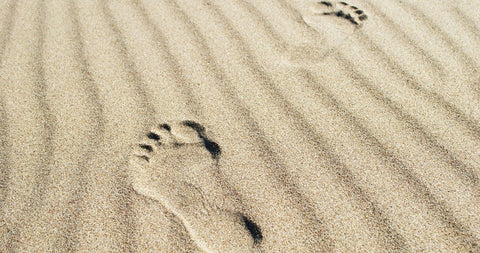
Black toenail
If you’re a keen runner, chances are you’ve had the odd black or blue toenail. And although it may be tempting to cover them up with socks or nail polish, it’s best to get it sorted rather than leave them untreated. If your nail trauma isn’t the result of running, it could indicate something more serious.
This is not a diagnostic tool. This healthcare professional does not endorse Scholl products and were paid by the makers of Scholl for their time producing this video.
What is a black toenail?
Toenails are naturally white in colour, so when they turn black it can indicate infection, trauma or other health issues.

What causes a black toenail?
Black toenails can be caused by a variety of things, many of which resolve on their own. They can arise from:
- Trauma – Usually caused by an injury to the toenail where blood vessels underneath the nail have broken and appear as a bruise. Most often seen in long-distance or regular runner
- Fungal infections – Whilst most fungal infections are white or yellow in appearance, they can sometimes materialise as black toenails.
- Skin cancer – This can appear as a brown misshapen spot underneath nail beds.
- An underlying health condition – Disorders may include anaemia, diabetes, heart or kidney disease.
Are there any genetic or lifestyle factors that play a part?
In addition to the conditions mentioned above, those at most risk include diabetics who tend to have less sensation in the feet and athletic people or exercise enthusiasts who are more likely to suffer with foot trauma.
When should I seek medical attention?
If you know you have another condition that’s being treated or have recently suffered a trauma to the nail, you don’t necessarily need to seek medical attention. However, if you don’t know what has caused your black toenail or it doesn’t fade or disappear, consult your healthcare professional.
How to get rid of black toenails?
Depending on the cause of your black toenail, you can treat it in the following ways:
- If sustained by an injury, a black toenail will disappear on its own accord once the nail grows out.
- If you have a fungal infection, apply an anti-fungal treatment to the fungal infection and limit a black toenail from forming. Untreated fungal infections can spread to other parts of the feet and body.
- Avoid tight-fitting shoes that pinch toes.
- Keeping nails short, having appropriate footwear with the laces tied correctly each time they are used and alternating running surfaces can help to prevent this problem.
Schollmed Once Weekly Fungal Nail Treatment 5% w/v medicated nail lacquer for the treatemnt of mild fungal nail.
Contains Amorolfine. Always read the label.
To explore related products, click here.
UK/SC/0319/0049h
